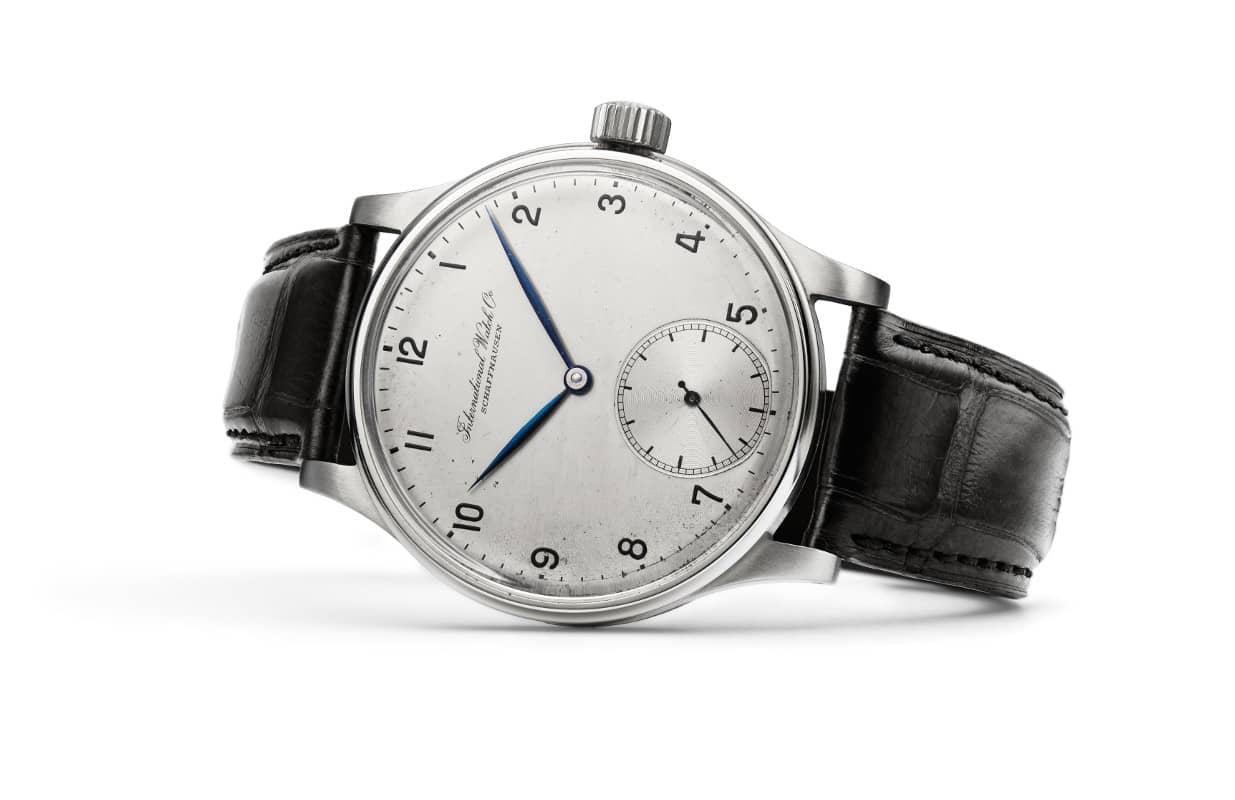A humble king: Who is the name behind IWC?
In the world of high watchmaking, there are some brands that stay away from flashy and prefer a quieter path, which I think should receive genuine respect and attention. The best example of this situation is the 155-year-old IWC.

Let's start with the story of my favorite Portugueseer model:
In the last days of the pocket watch era, in the 1930s, two Portuguese merchants named Rodrigues and Antonio Teixeira came to Schaffhausen in the German-speaking region of Switzerland. Their aim is to order a wristwatch for overseas voyages, waterproof and with a precise chronometer suitable for maritime conditions, for sale on the Portuguese market. Inspired by the aesthetics of pocket watches, IWC engineers produce the first highly legible and time-keeping reliable “Portugueser” model with a small seconds hand.
Sleeping Beauty
Portuguese traders had placed the order, but according to the IWC archive, the first Portugueseer model was sold to a Ukrainian watchmaker on February 22, 1939. The expected orders reached Portugal only in 1942 due to the Second World War. Despite being one of the iconic watches of the 20th century, the IWC Portugueseer model was overshadowed as a "sleeping beauty" for many years. One of the reasons was that the first model was produced with a diameter of 41.5 millimeters so that the watch could be easily read. Today, 39-42mm is considered the standard, whereas according to popular men's watch fashion for many years, a watch was considered elegant if its diameter was between 32-36mm, and was considered rude if it was a little large. This understanding started to change in the 1990s, on the contrary, after the 2000s, men's watches smaller than 36 mm were almost never produced. The IWC Portugueseer model was redesigned and produced in 1993 and has been attracting enthusiasts ever since.
IWC International Watch Co. AG, also known as IWC Schaffhausen, is a Swiss luxury watch manufacturer located in Schaffhausen, Switzerland. Originally founded in Switzerland by American watchmaker Florentine Ariosto Jones in 1868, the company was transferred to the Rauschenbach family in 1880 after bankruptcy and has been a subsidiary of the Swiss Richemont Group since 2000.
IWC is the engineer among luxury watchmaking companies. In fact, one of IWC's most famous models is named Ingeneur (French, engineer). Many brands emulate design and throw technique into the background, some brands produce technically strong watches but do not attach much importance to design. In this sense, IWC can produce watches with sharp characteristics in both directions (each with its own characteristics such as Pilot, Portofino, Da Vinci, and Aquatimer).
An American in Switzerland
IWC (International Watch Company) was founded in Switzerland in 1868 by the American engineer and watchmaker Florentine Ariosto Jones. Having problems with the watchmakers in his country, Jones decided to take a trip to Switzerland. Around the same time, there was an engineer named Heinrich Moser (who also owned the watch company H. Moser & Cie) who was building a water power plant in Schaffhausen, Switzerland. However, since electrical energy was not widespread in those years, he built a different system that transferred the produced power to the factories. With the help of Moser, Jones set up a watch factory that produced more than ten thousand movements a year.
The watches made were exported to the United States, but Jones failed to meet the expectations of the company's shareholders and was forced to return to the United States in 1875. This time, the IWC administration brought another American to the job. In 1880 the industrialist Rauschenbach family took over the company. According to records, the first IWC wristwatches were produced in 1899. (Wristwatches were produced exclusively for women from 1868, men did not leave pocket watches for a long time.)
Jung's gold pocket watch
Following the death of Johannes Rauschenbach-Schenk, Ernst Jakob Homberger took over the management of the IWC in 1905. Homberger had joined the family by marrying the youngest daughter of the Rauschenbachs. His brother-in-law, Carl Gustav Jung, the founder of analytical psychology, was also a partner in the company at the time. (Jung carried the gold IWC pocket watch, which he received as a wedding gift in 1903 from Emma Rauschenbach, whom he fell in love with at first sight, until his death.) Jung did not show much interest in the company but was philosophically close to watches. Saying that "the pendulum of the mind oscillates not between right and wrong, but between logic and nonsense," Jung sold his shares to Homberger in 1929.
Homberger launched the brand's first pilot model in 1936. Next came Portugueseer, then in 1944 he appointed inventor Albert Pellaton as technical manager at IWC. Pellaton developed the company's first automatic movement and the patented Pellaton winding system. The first Ingenieur model with a soft iron cage to protect the action against magnetic fields was produced in 1955, and the professional diving watch Aquatimer was made in 1967.
IWC was acquired (together with Jaeger-LeCoultre) by VDO Adolf Schindling AG in 1978. The new management came from the automotive world, but they found the best name possible and hired engineer Günter Blümlein. Blümlein, who made many innovations, was a true visionary, one of the first things he did was to support watchmaker Kurt Klaus. Kurt Klaus developed a perpetual calendar mechanism that did not require adjustment for 500 years. The Da Vinci Perpetual Calendar, released in 1985, inspired many watchmakers and brands. It continues its engineering attitude in the IWC genes, which are today in the Richemont group.
-------------------------------------------
IWC watches: history, innovations, and best 2021 models
https://www.horbiter.com/en/iwc/
